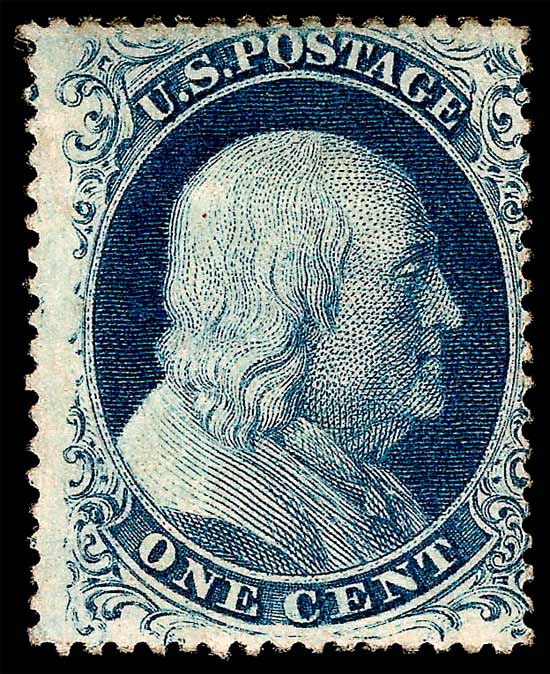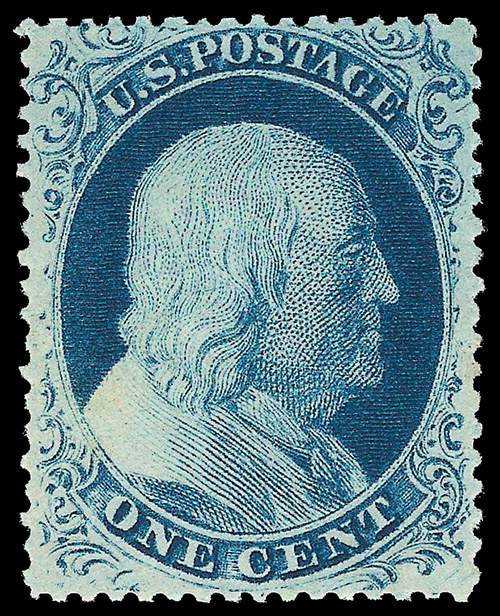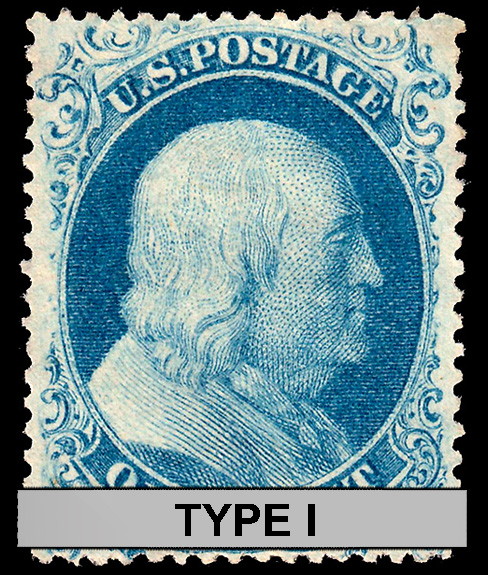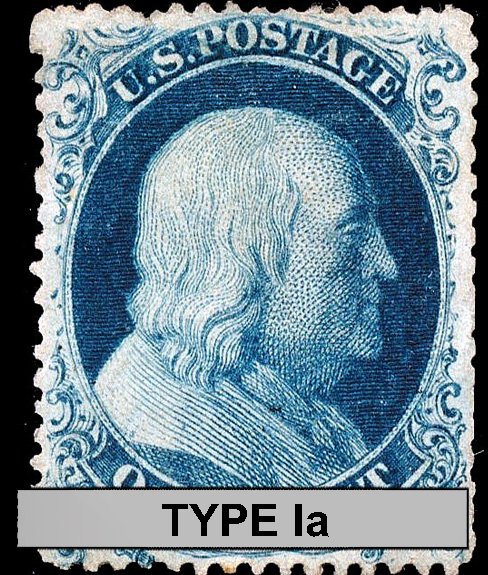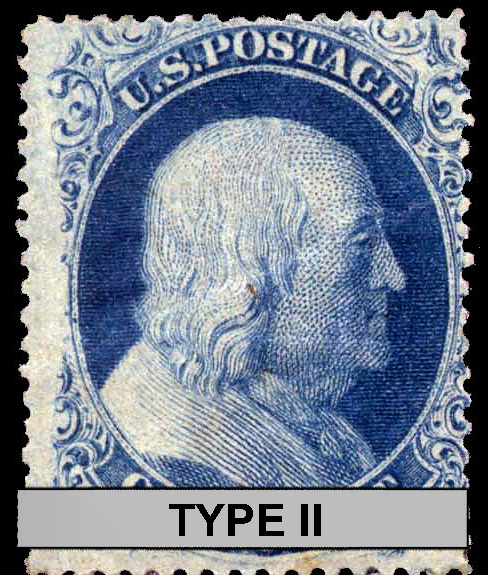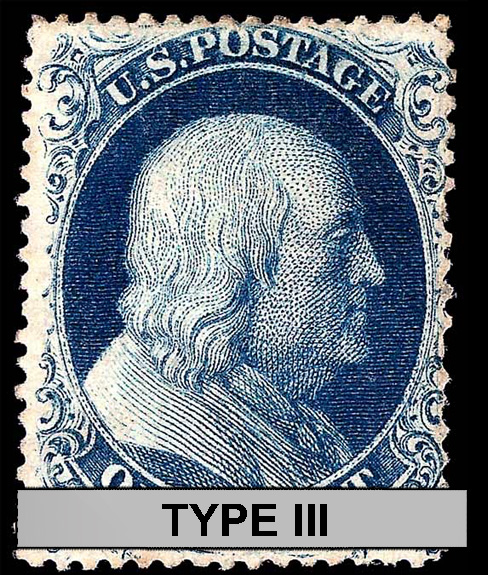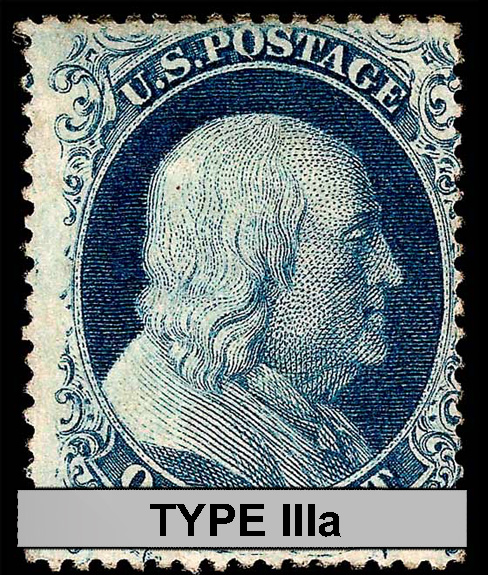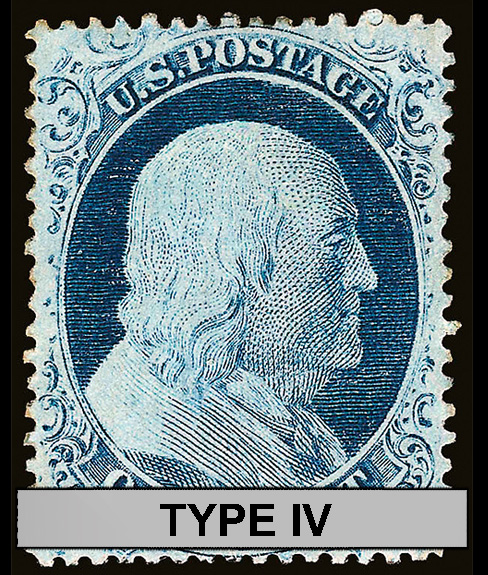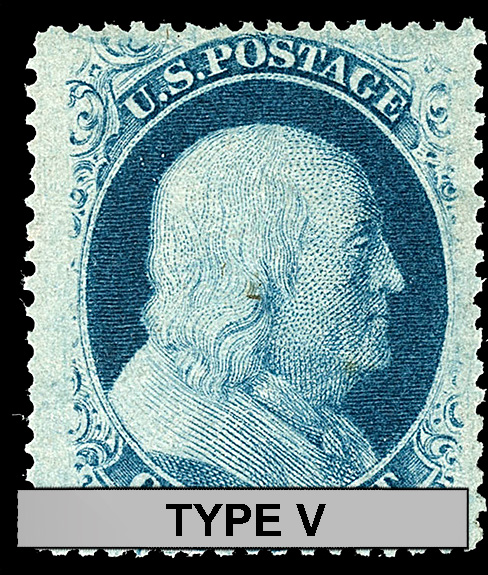Basic Info
1¢
Blue, pale blue and dark blue
Printing Method: Die-to-relief-to-plate transfer process
Plate: 2, 4 and 11
Printer: Toppan, Carpenter & Co.
(Plate 11 whilst part of the American Bank Note Company)
Subject: Benjamin Franklin
Number issued: unknown
Perforations: 15 to 15½
Watermark: Unwatermarked
Scott #: 22
Earliest date of use 7/26/57
Value
Used
$90 - $150
No postmark with gum (MH)
$125 - $300
Full perfect gum, no postmark
no trace of stamp hinge mark (MNH)
$1,900 - $2,000
Inspiration for the Design
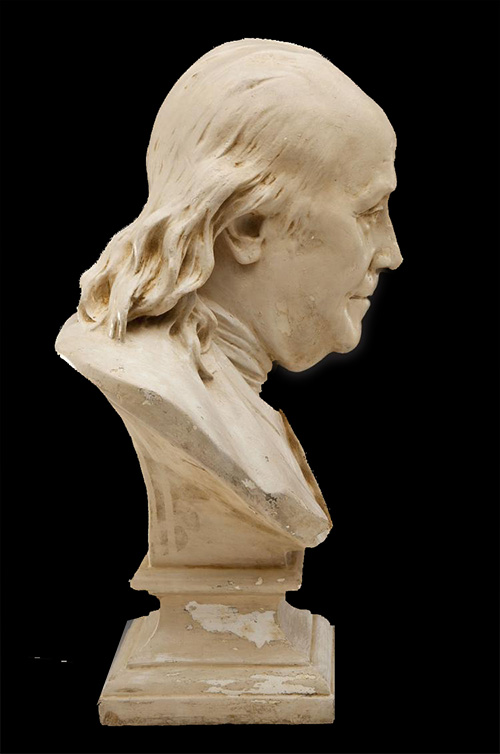
The vignette was based on Giuseppe Ceracchi's 1791 bust of Benjamin Franklin
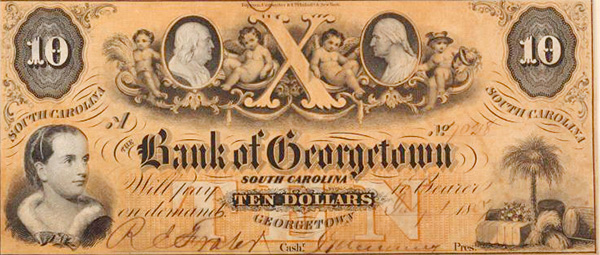
A contemporary banknote printed by Toppan, Carpenter with the same vignette as #22
The Imprint
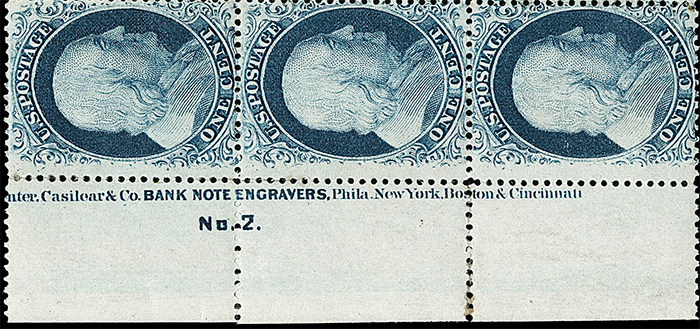
Plate 2 and 4 imprint

Plate 11 Imprint
Along the side margin of the sheet can be found the Printers imprint along with the plate number.
A full pane
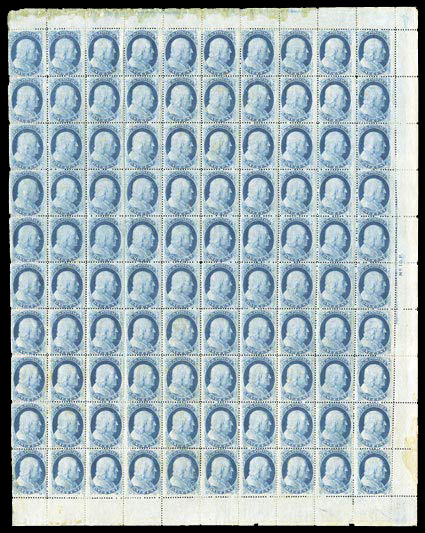
A full pane of 100 of the perforated 1857 1¢ Franklin, there are two panes to a sheet of 200
Identifying #22
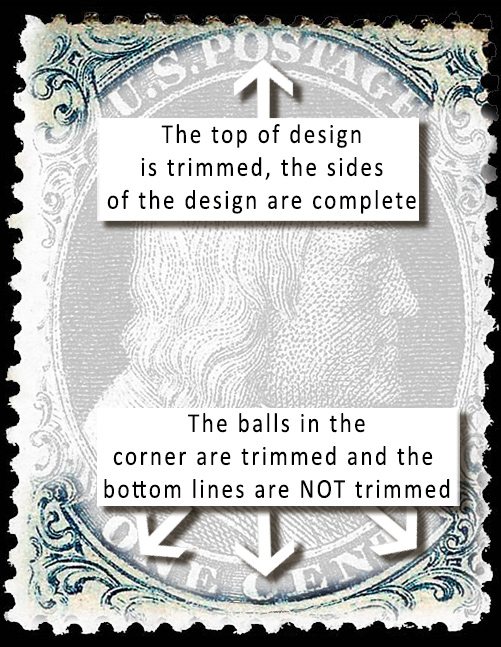
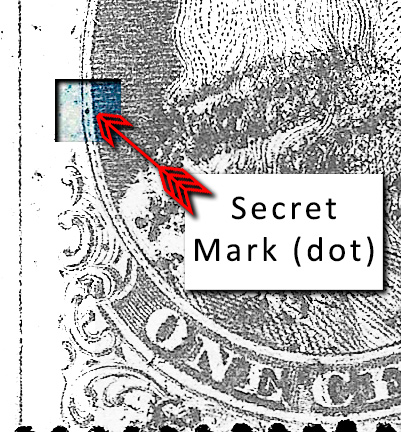

A better example of the trimmed design at the top of #22
Plate 11 which had 180 positions that produced Type Illa stamps. Every stamp from this plate, including the 20 type II stamps from the top rows of each pane of the plate, had a " secret mark " in the form of a dot as is shown in the illustration above.
#22 is a Type IIIa design. #22 is the same as #21 (type III), but either the bottom or, more commonly, the top line are broken, but not both.
The first perforated stamps
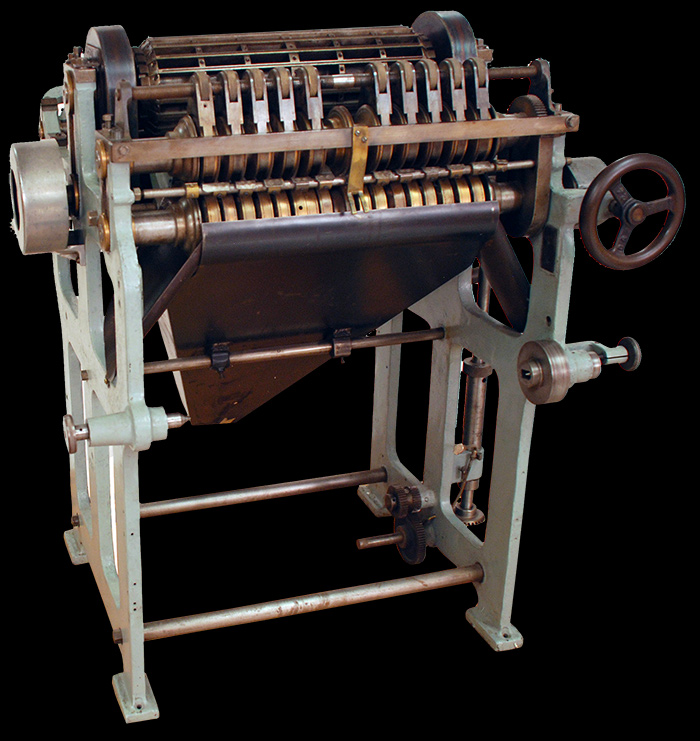
The perforating machine used on the 1857 issue
The idea behind perforating the stamps was to make the stamps easier to separate and apparently to make the stamps adhere better, although I am not sure about the thinking behind that one.
A rouletting machine was purchased from the UK. The only perforating machines were made in the UK and the British Printers, Perkins Bacon, did not want to let one go abroad. A typical British attitude at the time. So the Bureau purchased the rouletting machine. They tried it out and the result was not what they were looking for. To convert the rouletting machine to a perforating machine was as simple as swapping out the rouletting roller with a perforating roller (which had to be designed and produced). Takes less than a minute.
There was one slight problem space allowance to feed the sheets of stamps was kind of narrow. This was solved by squeezing the row of stamps into the narrower space. Something that philatelists who prize four margin stamps will forever regret.
The sheet of stamps was fed in one way to get the vertical perforations, the spacing on the perforator roll was changed and then the sheet was fed through horizontally.
Forgery
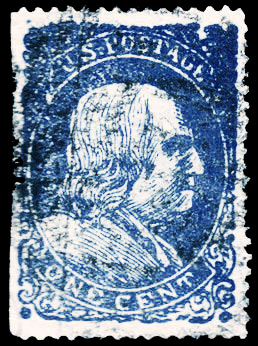
A contemporary forgery of the 1¢ Franklin

Essay's and Proofs

